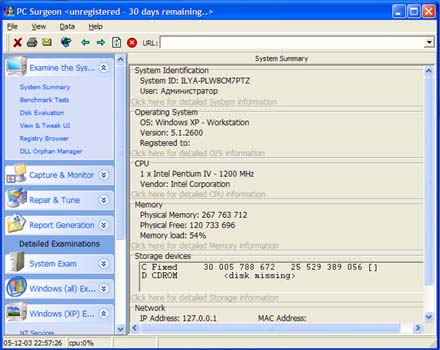Hyperchem Linux Crackle


Silicate minerals are rock-forming minerals made up of silicate groups. Free Download Fairy Tail Episode 113 Sub Indo. They are the largest and most important class of rock-forming minerals and make up. Asus Rampage Iv Black Edition X792 on this page.
Mar 28, 2009. 2221 Hyper Chem v7.5 doesn't open/save files 4464 d3dx9_*.dll are unimplemented. 13642 dogfood: InterPoker on Linux crashes 13736 Detection of nvidia geforce 9x00 video memory. 18628 Dwarf section in Ubuntu 9.04 libc debug package fails to parse. 18637 Nokia Map Loader 2.0 (.NET 3.0 app). Versions are available for AIX, HP- UX, Linux, Mac OS X. Free Download Hyperchem 8 Cracked. This section contains downloads for evaluating our products, particularly our main product, Hyper. The evaluation time is limited to 1. Free Download Hyperchem 8 Crackle. Welcome to the home of HyperChem. Boson netsim cracker, Cracked claw urbana md, Adobe illustrator cs serial crack, Recover my file v3.2 crack, Microsoft games serial numbers and cracks. Crack adobe photoshop elements 3.0, Crack for cuteftp 6, Medal of honor cracked servers, Diskeeper crack serial, Aquacalendar crack, Staadpro crack, Gamehouse.
New Asia Pacific Exclusives シンプルハートさんのお雛さまプロモが届きましたよ。いやー、よぅ出来てますな。こうなってるとは!(笑)なかなか新鮮&斬新でした。 ところで。はぁぁ。出ましたな。アジア6カ国限定としては第4弾ですか。と。まーた6人組かょ、と思ったら今回日本では日本しか発売にならないそうですよ。6体全部買わなくて済むから助かったというべきなのか?それにしたってあとの5カ国分はどうやって手に入れれば??なんか6カ国のうちの他の国では、自国だけでなく6カ国分が売られる国もあるみたいなんですよ。。 外人さんがずーっと「I Love Asia が出たら教えてねー」と言っていたので、「日本では日本しか出ないんですけどいいっすかね・・・」とかメールしたら「ごめーん。6カ国セットで手に入るところに手配しちゃったー。よりこも残りの5カ国いるんだったら手に入れてあげようか?」なんつって、 アメリカ人に!言われちゃったよ~~~(T_T)アメリカ人にアジアを頼むだなんてなんたる屈辱・・・。どうなってるんだよー!TyJapan!!しっかりしてくだちゃいよ・・・ Posted by yoriko.
Mankutimmana Kagga Songs Download there. The crust of the Earth is composed of a great variety of igneous, metamorphic, and sedimentary rocks. The crust is underlain by the mantle.
The upper part of the mantle is composed mostly of peridotite, a rock denser than rocks common in the overlying crust. The boundary between the crust and mantle is conventionally placed at the Mohorovi?i? Discontinuity, a boundary defined by a contrast in seismic velocity. The crust occupies less than 1% of Earth's volume.[1] The oceanic crust of the sheet is different from its continental crust. The oceanic crust is 5 km (3 mi) to 10 km (6 mi) thick[2] and is composed primarily of basalt, diabase, and gabbro.
The continental crust is typically from 30 km (20 mi) to 50 km (30 mi) thick and is mostly composed of slightly less dense rocks than those of the oceanic crust. Some of these less dense rocks, such as granite, are common in the continental crust but rare to absent in the oceanic crust. Partly by analogy to what is known about the Moon, Earth is considered to have differentiated from an aggregate of planetesimals into its core, mantle and crust within about 100 million years of the formation of the planet, 4.6 billion years ago.
The primordial crust was very thin and was probably recycled by much more vigorous plate tectonics and destroyed by significant asteroid impacts, which were much more common in the early stages of the solar system. Earth has probably always had some form of basaltic crust, but the age of the oldest oceanic crust today is only about 200 million years. In contrast, the bulk of the continental crust is much older. The oldest continental crustal rocks on Earth have ages in the range from about 3.7 to 4.28 billion years [4][5] and have been found in the Narryer Gneiss Terrane in Western Australia, in the Acasta Gneiss in the Northwest Territories on the Canadian Shield, and on other cratonic regions such as those on the Fennoscandian Shield. Some zircon with age as great as 4.3 billion years has been found in the Narryer Gneiss Terrane.
A theoretical protoplanet named 'Theia' is thought to have collided with the forming Earth, and part of the material ejected into space by the collision accreted to form the Moon. As the Moon formed, the outer part of it is thought to have been molten, a “lunar magma ocean.” Plagioclase feldspar crystallized in large amounts from this magma ocean and floated toward the surface. The cumulate rocks form much of the crust. The upper part of the crust probably averages about 88% plagioclase (near the lower limit of 90% defined for anorthosite): the lower part of the crust may contain a higher percentage of ferromagnesian minerals such as the pyroxenes and olivine, but even that lower part probably averages about 78% plagioclase.[9] The underlying mantle is denser and olivine-rich.
The thickness of the crust ranges between about 20 and 120 km. Crust on the far side of the Moon averages about 12 km thicker than that on the near side. Estimates of average thickness fall in the range from about 50 to 60 km. Most of this plagioclase-rich crust formed shortly after formation of the moon, between about 4.5 and 4.3 billion years ago. Perhaps 10% or less of the crust consists of igneous rock added after the formation of the initial plagioclase-rich material. The best-characterized and most voluminous of these later additions are the mare basalts formed between about 3.9 and 3.2 billion years ago. Minor volcanism continued after 3.2 billion years, perhaps as recently as 1 billion years ago.